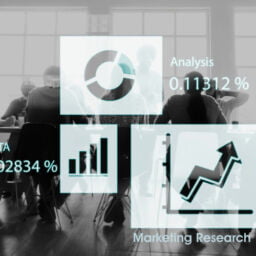
Data mining is a process you can use to uncover valuable insights and patterns within large-scale data sets. Global organizations are leveraging data mining to gain competitive advantages as the process provides insights that can help shape business decisions and create opportunities for cost savings, productivity gains, and market growth. In this article, we will give an extensive overview of the best data mining applications and their benefits in the real world.
Overall, data mining provides many benefits (for instance, enhanced decision-making or predictive pattern recognition), which make it a critical process for any organization looking to stay ahead of the competition.
The use of data mining allows businesses to accurately target audiences, thus optimising their spending power for maximum efficiency or leveraging models that identify risks quicker than traditional methods.
9 Top Data Mining Advantages
1. Analyse big data quickly
Data mining is a powerful aid for quickly analysing large data sets, helping to uncover new and valuable insights. Data mining and big-data analytics technologies are becoming more and more accessible for data analysts and professionals. They can access a wealth of data (that would otherwise remain hidden) and uncover trends in complex data sets to make faster and more informed decisions.
2. Make better decisions
By sifting through data quickly and accurately, data mining allows us to uncover valuable insights in just a fraction of the time it would take using traditional methods. This data can inform choices around budgeting, staffing, launching new products, marketing, strategising, and more.
3. Improve marketing and sales
Data mining is a powerful tool that can help improve marketing and sales by providing more insight into customer preferences and data. Your business can gain insight into demand forecasting, market trends, and data-driven strategies.
From there, you can develop targeted strategies to increase customer acquisition and optimise the customer lifetime value by fine-tuning targeting efforts and promotional campaigns. With data mining, you can enhance your marketing and sales activities to create meaningful customer relationships while optimising web traffic, online engagement, and revenue.
4. Improve customer relationships
By providing data-driven insights into business data, such as customer interactions with a brand or data concerning user demographics, your company can tailor its offerings and customise sales strategies to meet your customer needs. Moreover, data mining can also assist you in automating customer service processes and help streamline operations for improved customer experience.
5. Increase the production uptime
By analysing data from several sources, such as quality control, sensors, maintenance, and the supply chain, you can identify areas for improvement in its production processes and take action to prevent downtime.
You can use data mining to understand how to meet optimal safety standards, reduce risks of failure, and improve the reliability of the resulting product.
6. Handle risks
Using data mining, you can identify anomalies or data patterns which could indicate a potential risk. You can also automate processes and detect threats before they occur, allowing you to mitigate the impact on your data.
This helps your business have more secure data systems while allowing you to reduce the possibility of costly data breaches or any other adverse consequences associated with data-based risks.
7. Reduce costs
Extracting data from data sources, data mining can identify patterns and correlations within data that can show cost trends over time and provide critical insights into unnecessary operations or practices and how to lower expenditures.
This allows data miners to develop strategies that promote cost reduction and control while preserving high-quality service or product standards. Investing in data mining for your business could eventually save you time, money, and resources – helping lead you one step closer to achieving long-term sustained growth.
8. Measure your results
Whether for a website, online store, sales channel or customer management system, data mining can provide detailed data you can track over time. This way, you can easily compare performances across different intervals, determine the effectiveness of a particular course of action, and make improvements based on the collected data.
9. Get a competitive edge
Data mining strategies such as segmentation and clustering allow your company to identify customer personas and understand individual user behaviour in-depth.
9 Best Data Mining Applications

Data mining helps businesses develop better strategies in many fields, such as marketing campaigns, product design, customer segmentation, fraud detection, sentiment analysis, and risk management.
Your business can use data mining to discover customer habits, track marketing effectiveness or better personalise product offerings. You can find correlations between events, analyse customer segmentation data to predict future purchases and build data-driven models for identifying complex relationships among different data elements.
Data mining can also be applied in scientific research fields, such as Machine Learning and Artificial Intelligence, where data mining draws from vast data sets to develop models that can rapidly sort through data inputs and accurately predict outcomes.
Let’s see the most common data mining use cases your business should consider.
1. Shopping market analysis
By gathering customer data, your business can analyse trends and target marketing messages to those most likely to purchase your products or services. Data mining allows you to maximise profits by adjusting your sales strategies according to customer behaviour.
Data mining also helps your company track the most popular products and services for your customers. That way, you can tailor your offerings as needed, do product matching, monitor your competitors, and automatically execute dynamic pricing strategies.
2. Stock market analysis
Are you an investor? Data mining can help you build better portfolios by helping identify stocks with promising growth prospects, analyse the markets for valuable arbitrage opportunities, forecast future values, predict when to enter and exit trades, and more.
With data mining tools, you can also develop models that measure and forecast competitive landscapes, which is essential for strategic investments in stock returns.
By using data mining to analyse information such as news headlines, economic indicators, and public announcements, you can understand how external factors will affect your investments and make informed decisions when trading on the stock market.
3. Financial banking
Data mining can provide insights into customers’ behaviours, preferences, and transactions to improve future marketing assets and make predictive decisions about risk management and potential fraud.
The advantages of data mining for financial banking include increased accuracy in predicting customer behaviour, more efficient credit scoring systems, and targeted media campaigns.
Data mining helps banks stay competitive while managing risk and streamlining processes, such as customer onboarding, KYC validation, and back-office operations.
4. Supply chain management
Your company can apply data mining to gain insights into patterns of customer behaviour, slow-moving items, potential new sourcing sites, optimal locations for new stores, future product demand, and labour requirements.
Data mining facilitates accurate decision-making in the supply chain process, such as inventory stocking, warehousing, and product shipping (distribution and logistics). This helps you reduce the risk of inventory shortages or overstock and respond to changes in demand.
5. Data mining in social media
Data mining in social media can provide invaluable insights into trends in public opinion and how individuals interact online. As platforms like Facebook, Twitter and Instagram become crowded with content, data mining can help simplify the key relationships and patterns discovery process.
With the right approach, you can efficiently analyse user conduct, identify preferences, such as comments and searches, and market products directly to users by identifying unmet needs or gaining knowledge about target audiences.
6. Weather forecasting analysis
Data mining pools data from various sources, including historical records and current trends, to create a holistic view of environmental conditions and their imminent evolution. By collecting such a wealth of information, you can accurately predict the behaviour of a city’s climate system or obtain longer-term forecasts.
Weather forecasting through data mining is invaluable for decision-makers at all levels as it can help inform decisions regarding agriculture, tourism, transportation, and more.
This is helpful for citizens, particularly those living in densely populated areas, who rely on accurate forecasts for the day-to-day management of outdoor activities (yard work, outdoor recreation events, etc.).
7. Healthcare
Data mining allows for quick and efficient analysis of patient health records, which helps break down complex clinical data into predictors, parameters, and trends (for ex., identify potential risks or diseases before they become serious).
Data mining can also help personalise treatments and target interventions at the individual level.
Lastly, data mining can help detect fraud, waste, and abuse in healthcare clinical and financial areas by uncovering hidden relationships between different data types.
8. Fraud and intrusion detection
Data mining employs advanced algorithms, such as supervised or unsupervised Machine Learning to detect patterns or anomalies that could be linked to fraudulent activities or malicious intrusions.
Data mining algorithms can go through logs, databases and various other sources of information to detect malware, unauthorised activities, scams, takeover attempts, account creation fraud, irregularities in transactions, malicious emails or messages (by analysing the content, sender identity, and recipient address), cyberattacks, and other threats.
In this fashion, you can quickly identify security risks and take preventative measures before your data and networks are compromised.
Data mining also offers insight into user behaviour to identify security risks, understand system dynamics and discrepancies that may indicate a data breach or fraud, and implement policy changes accordingly.
9. Surveillance
Data mining for surveillance applications has been gaining ground in recent years. Your organization can leverage data mining to proactively protect its assets by taking automated actions such as blocking an event based on predefined conditions or scenarios.
Data mining can quickly and accurately pinpoint suspicious activities, allowing prompt and decisive responses to prevent them from occurring. Agencies can use data mining to identify crime patterns or people’s behaviour, providing an invaluable resource when assessing potential legal or business risks.
Data mining tools also feature powerful analytics capabilities to effectively and affordably monitor activities of interest.
Would you like to make data mining effective? Then, you require large data sets and proper resources. The solution is using big-data scalable and accessible web scraping services and infrastructures designed and arranged to handle the whole process also in real-time without issues.

Optimise your big data extraction
Join the waiting list for our no-code web scraping tool and benefit from a lifetime 30% discount!
Or Book a free consultation with our experts
Credits: Featured image by Olga Hmelevskaya and upklyak on Freepik


















[…] By WebRobot Marketing Marketing Web Scraping April 12, […]
[…] scraping and data mining are ways to supercharge GPT-4 models. By collecting large volumes of data from multiple sources, AI […]
[…] can work more efficiently and profitably in finance, asset management, and trading by leveraging web scraping and data mining. But you need the proper data […]
[…] customer behaviour, market trends, and competitive analysis. Advanced analytics techniques, such as data mining, Machine Learning (ML), and predictive modelling, can help you extract meaningful insights from […]
[…] with dozens of web data sources you can use to extract valuable data for your web scraping and data mining and analytics project or your business […]
[…] travel data is massive and changes continuously. Therefore, only advanced big-data web scraping, data mining, and travel analytics can help you effectively. So, look for the data solution that best fits your […]
[…] can track prices on airline websites, OTAs, or flight comparison platforms. With the addition of data mining algorithms and data analytics tools, you can use these airline data to implement or improve your dynamic […]